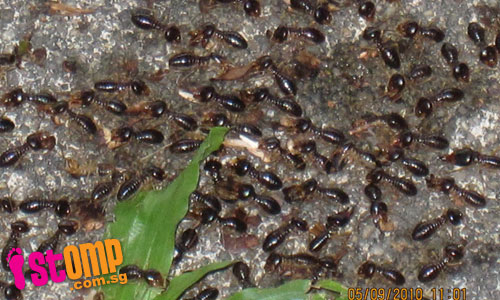
STOMPer Richard is concerned about his well-being when he saw an army of large black ants invading his building at Margaret Drive. It could be dangerous if someone gets bitten he says.
He said in an email:
"This is a first for me in my life to see such a large army of ants marching across my building at Margaret Drive.
"It can be dangerous if someone gets bitten."
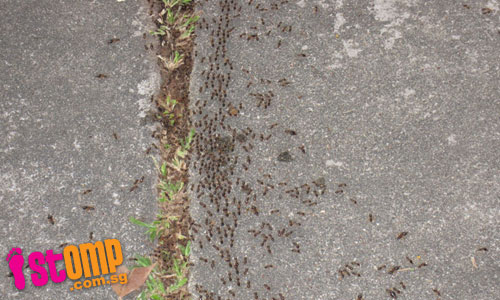
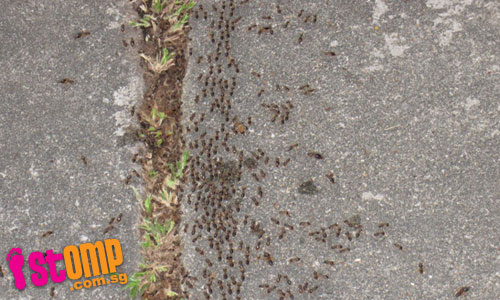
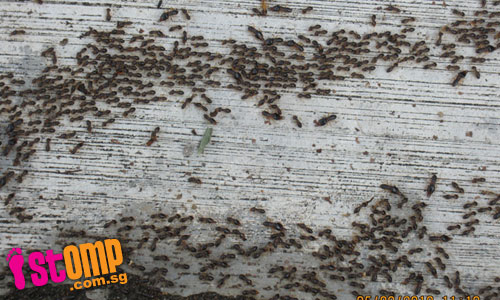
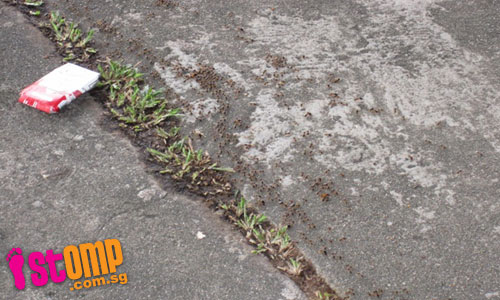
These are not ants, but termites. Unlike bees, wasps and ants, which form a group known as the Hymenoptera, termites belong to the Isoptera, and are in fact believed to be highly specialised cockroaches.
Based on this page, it is likely that the termites in these photos are Macrotermes carbonarius. There is plenty of information pertaining to this particular species here and here.
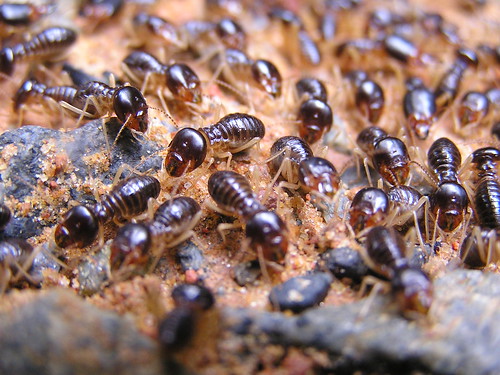
(Photo by kch...)
For one thing, Macrotermes carbonarius is widely distributed in Southeast Asia and parts of Indochina, but its range is patchy and it is only locally abundant. This species is found mostly in lowland rainforest habitats, but has also been known to inhabit agricultural areas.
Largely nocturnal, Macrotermes carbonarius is occasionally seen foraging in the day. Based on my personal experience, this seems to occur after heavy rain, presumably because of cooler daytime temperatures.

(Photo by James)
Macrotermes carbonarius is known to build large mounds up to 2 metres in height, but the bulk of the colony is hidden underground. Macrotermes as a whole are famous for building truly impressive termite mounds; some African species are known to have mounds up to 9 metres in height! These are the termites that build mounds famous for a highly complex internal structure, with ventilation shafts, air ducts, heating and cooling systems, and special chambers for cultivating fungus (more on that soon).
The termite mounds examined in these video clips are probably those of Macrotermes:
The workers leave the nest in large numbers to gather dead leaves, grasses, twigs, branches, and any other relatively soft plant matter, and are not known to attack man-made structures or trees. Therefore, they do not pose any threat to wooden objects, unlike some other termite species.
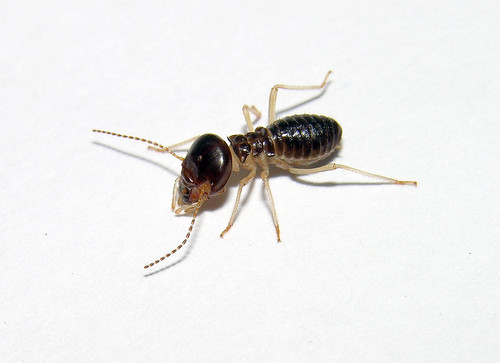
Macrotermes carbonarius worker;
(Photo by artour_a)
The interesting thing is that the termites don't feed on the plant material, but instead bring it back to the colony, where it is chewed up and used as a growing medium for a specialised fungus (Termitomyces spp.), which the termites then feed upon. Hence, just like the famous leafcutter ants (Atta spp.) of the Americas, Macrotermes termites also have their own fungus gardens - another way in which the ants and termites, 2 very distantly related groups of highly social insects, have converged in their evolution. All 330 known species of Macrotermes, which are spread across Africa and Asia, practise this form of agriculture.
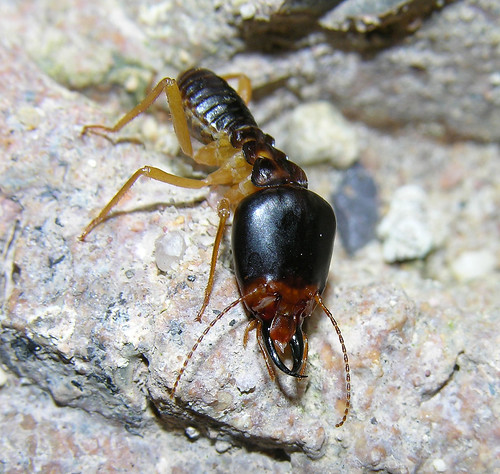
Macrotermes carbonarius soldier;
(Photo by artour_a)
As can be guessed by their fearsome appearance and menacing-looking jaws, the soldier caste can give very painful bites. In fact, this is their sole purpose, to defend the colony and protect the vulnerable workers from predators.

(Photo by artour_a)
Like many other termite species, the worker and soldier castes of Macrotermes carbonarius are dimorphic; there are 2 sizes for each caste, the major and the minor. Major workers and soldiers are larger than their minor counterparts. The differences are quite clear in the photos on Termite Web and Photos and Info on Ants and Termites of Malaysia.
Termites are notorious for being highly destructive pests, but the majority of species are harmless and pose no threat to human property. They play an important role in our ecosystems, helping to break down plant matter and recycle nutrients. They are an important food source for many creatures, from other insects to reptiles, birds and mammals.

These termite swarms can truly make your skin crawl;
(Photo by kch...)
Besides Macrotermes carbonarius, 2 other species belonging to this genus may be found in the region: Macrotermes gilvus and Macrotermes malaccensis. It is possible that either 1 or both of these species are shown in the following photos.
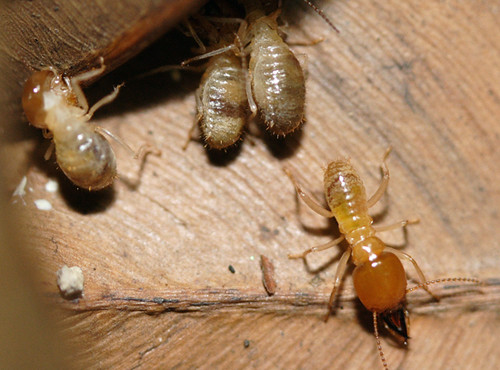
(Photo by Marcus)

(Photo by James)
The excellent Photos and Info on Ants and Termites of Malaysia also has pages on Macrotermes malaccensis and Macrotermes gilvus.
It is true that the soldier termites can give painful bites, but these are not life-threatening and no injection of venom is involved (unlike with ants, which have many species that sting as well as bite).
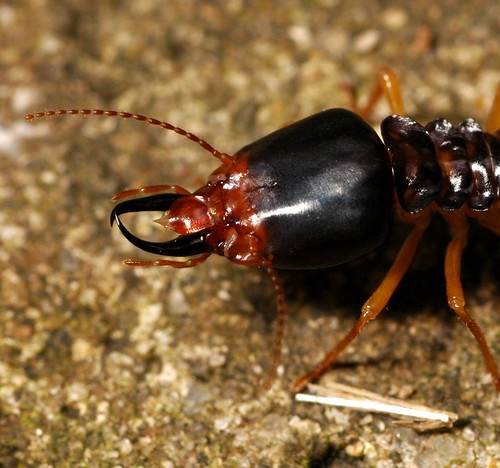
(Photo by Tiomanese)
People may wish to prevent these termite swarms from entering houses and gardens, but it is important to note that it is highly unlikely that they will be able to completely eradicate the source of the termites, unless they manage to track down the queen and remove her from the colony. That is the problem with dealing with ants and termites; it is possible to keep killing, but as long as there is a reproductive female producing young, the colony will continue to survive and prosper.